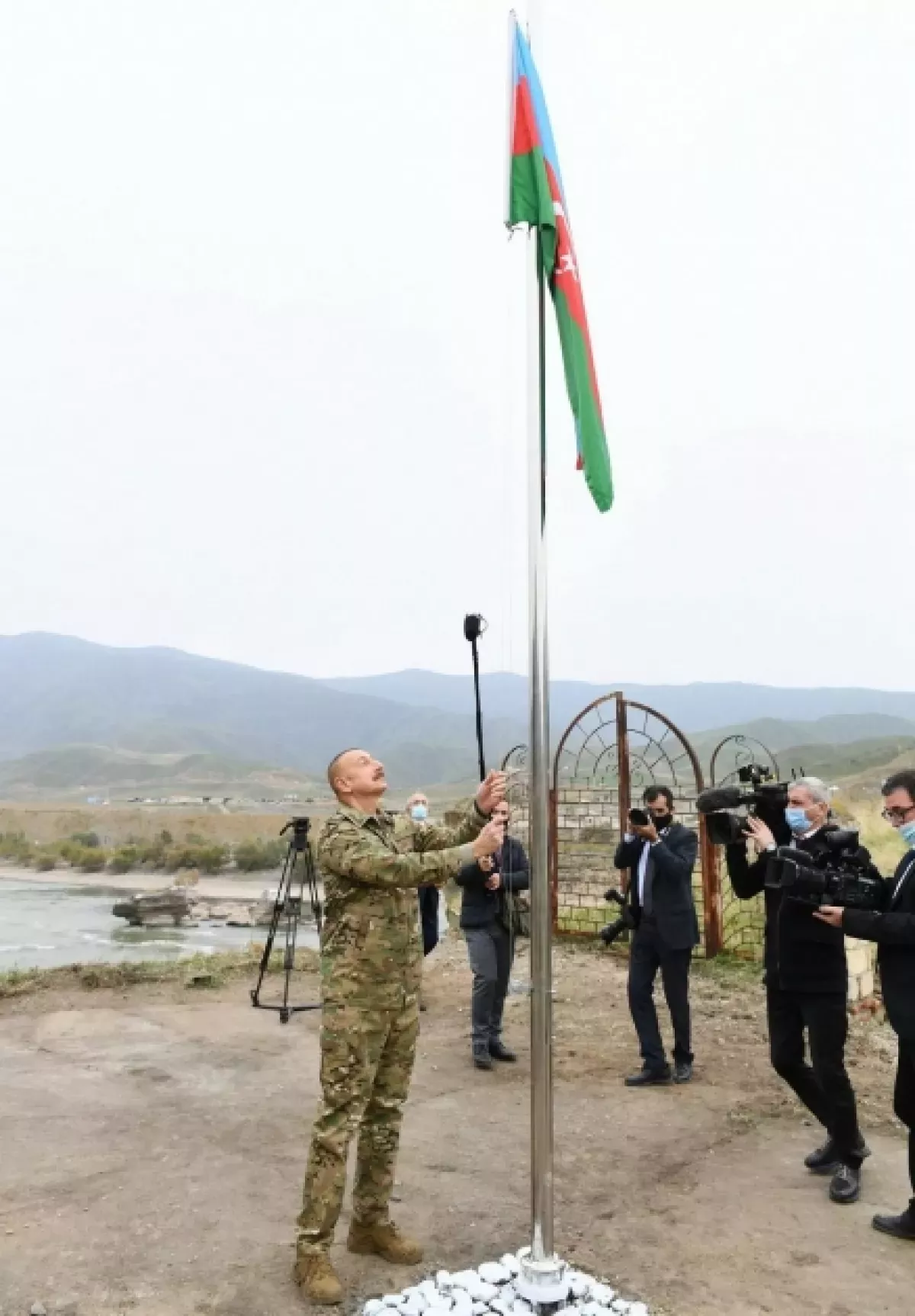Azerbaijan marks five years since liberation of Khudaferin Bridge
Today, 18 October, marks the anniversary of the liberation of the ancient Khudaferin Bridge, located in the Jabrayil district, and the surrounding territories from Armenian occupation.
As reported by Caliber.Az, the bridge connects the Azerbaijani and Iranian banks of the Araz River.
On this day, along with the Khudaferin Bridge, two more settlements of the Jabrayil district — the villages of Hajili and Haji Isagli — were liberated from occupation.
The tricolour flag of Azerbaijan was raised over the liberated territories.
The valiant Azerbaijani Army returned this invaluable monument to its rightful owner. On this occasion, President Ilham Aliyev wrote the following words on his Twitter account:
“The Armed Forces of Azerbaijan have raised the Azerbaijani flag over the ancient Khudaferin Bridge. Long live the Azerbaijani people! Karabakh is Azerbaijan!”
The liberation of a 132-kilometre stretch of the Azerbaijani-Iranian state border was an exceptionally significant event in the full restoration of the republic’s territorial integrity.
Six days after the victory in the Patriotic War — on 16 November 2020 — President Ilham Aliyev and First Lady Mehriban Aliyeva visited the Jabrayil district, liberated from occupation. The president raised our national flag over the historic Khudaferin Bridge. Khudaferin, which has left a profound mark on the spirituality and history of the Azerbaijani people, stands as a symbol of national pride.

The Khudaferin bridges are unique architectural monuments consisting of 11 and 15 arches, dating back to the 11th–13th centuries. They were built of stone and faced with large slabs.
Researchers agree that the 11-arch bridge was constructed during the Ilkhanid (Hulagu) period on the remains of an ancient bridge. It is approximately 130 metres long, 6 metres wide, and rises 12 metres above the river. At present, three of its central arches have survived, while the parts near the riverbanks were demolished by order of the Soviet authorities in the 1930s.
The 15-arch Khudaferin Bridge is believed to date from the 13th century. According to Hamdallah Qazvini, it was built by Bakr ibn Abdullah — a companion of the Prophet Muhammad — in the fifteenth year of the Hijri calendar (639 AD). The bridge’s piers rest on natural rock foundations, which results in arches of varying spans. Constructed from baked brick and river stones, the bridge is about 200 metres long, 4.5 metres wide, and reaches a maximum height of 12 metres above the river.
Medieval sources contain detailed information about the Khudaferin bridges, which were located along the route of the Silk Road. In ancient and medieval times, these historic bridges played an important role as vital communication links and served as a key crossing point for migration routes from the south to Karabakh.
The Khudaferin bridges are regarded as outstanding examples of the exceptional engineering skills of Azerbaijani architects. According to many researchers, the name “Khudaferin” (“God-created”) originates from the fact that the bridges’ piers were built on natural monolithic rocks in the middle of the river. It is also believed that these bridges played a significant role in the development of Azerbaijan’s economic and cultural ties — stretching from India to the countries of the Near and Middle East, as well as with Russia and Western Europe.








